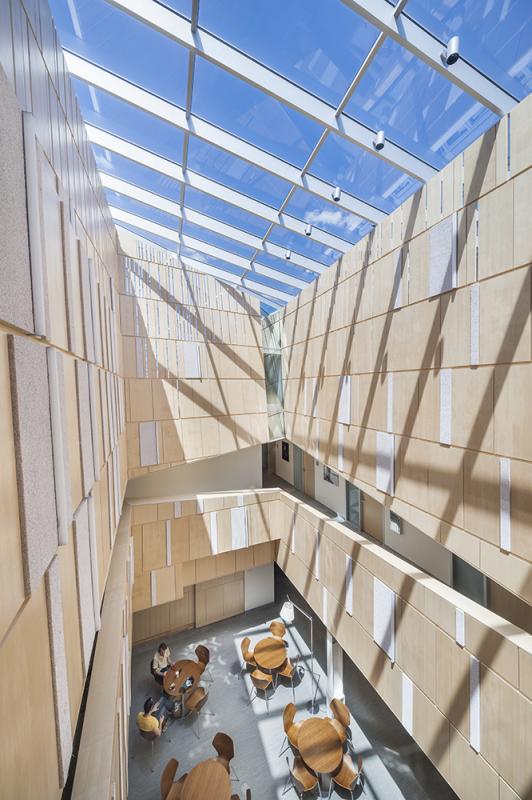Tozzer Anthropology Building
Modern-era campus buildings across America are aging due to obsolete codes that cannot meet contemporary envelope, access, and energy requirements. At the same time, universities cannot dismiss the embodied energy that went into constructing these buildings. The Tozzer Anthropology Building at Harvard University takes a bold approach to this problem by building upon the existing building’s carbon investment. This transformative LEED-Gold project creates a new public identity for 1971 Tozzer Library while reusing original foundations, structure, and infrastructure connections. The transformed massing increases the usable area by 29% by adding two stories of new construction under a large copper roof volume, which strengthens a reading of the building as a pavilion in the courtyard. The roof volume rotates to capture daylight for an internal lightwell. At the new entry pavilion, the design invents a digital brick wall that stacks and corbelstransforming contemporary cavity wall construction. The 30' entry has no control joints or relieving angles, just one custom-designed loose lintel set above the hung brick ceiling. Each course is shifted from the course below, creating a 3D brick envelope that is derived from this specific massing form. The main building is wrapped by taught brick bands which express the existing slab. The structurally-glazed projecting windows slide past the ‘thin’ brick envelop to provide large views from Library to Courtyard. With a play of “thick” and “thin”, the design creates an authentic brick expression that reflects contemporary design and the depth of the adjacent landmarked Peabody Museum. The new program is organized around a torqued central lightwell clad in birch panels that are designed to reflect light and absorb sound. Offices and classrooms ring this “living space”, which brings daylight into the building, and creates visual relationships between floor levels. The lightwell circulates tempered air as part of an innovative energy- saving heat recovery/ventilation system.
![[Kennedy & Violich Architecture - Tozzer Anthropology Building - COVER IMG]](https://architectureprizecom.s3-us-west-2.amazonaws.com/uploads/large/large_1468332978.jpg)



